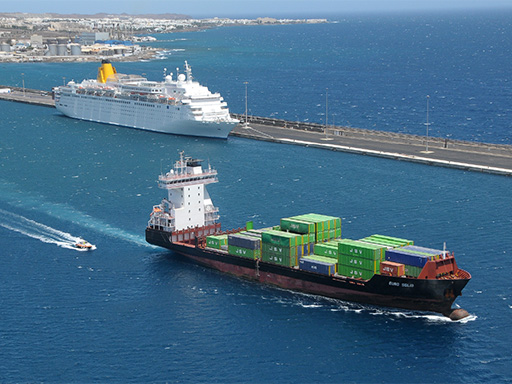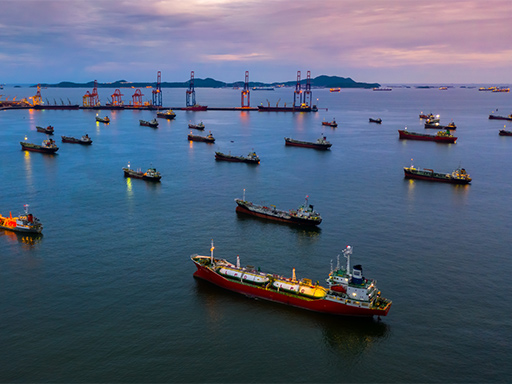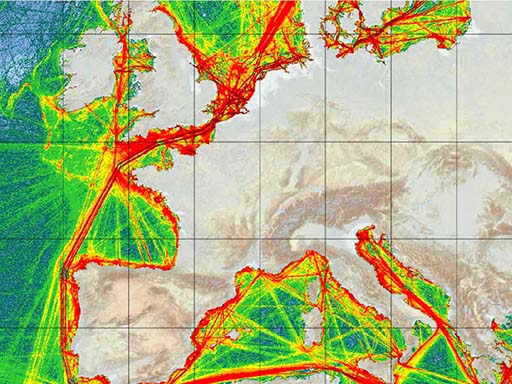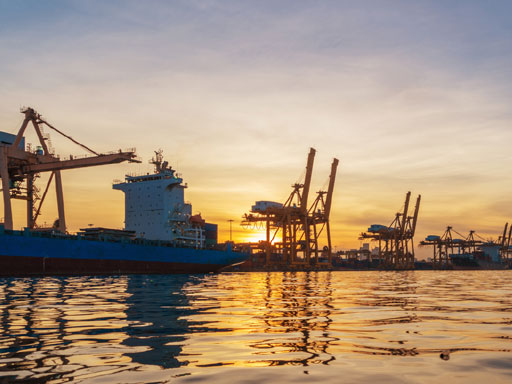Contribution to the EMSWe

A more efficient and competitive maritime transport sector in the EU requires simpler and less burdensome administrative procedures. To this end, Regulation (EU) 2019/1239 introduces a European Maritime Single Window environment (EMSWe) with harmonised interfaces to simplify reporting obligations for ships arriving at, staying in, and departing EU ports.
The EMSWe introduces a simplified digital information system, which harmonises the existing national systems and reduces the need for paperwork. It is the legal and technical framework for the electronic transmission of information about reporting obligations for ships calling at EU ports.
At the heart of the Interoperability project are a series of key actions designed to underpin the EMSWe, focusing on a common dataset, message formatting, and harmonised processes:
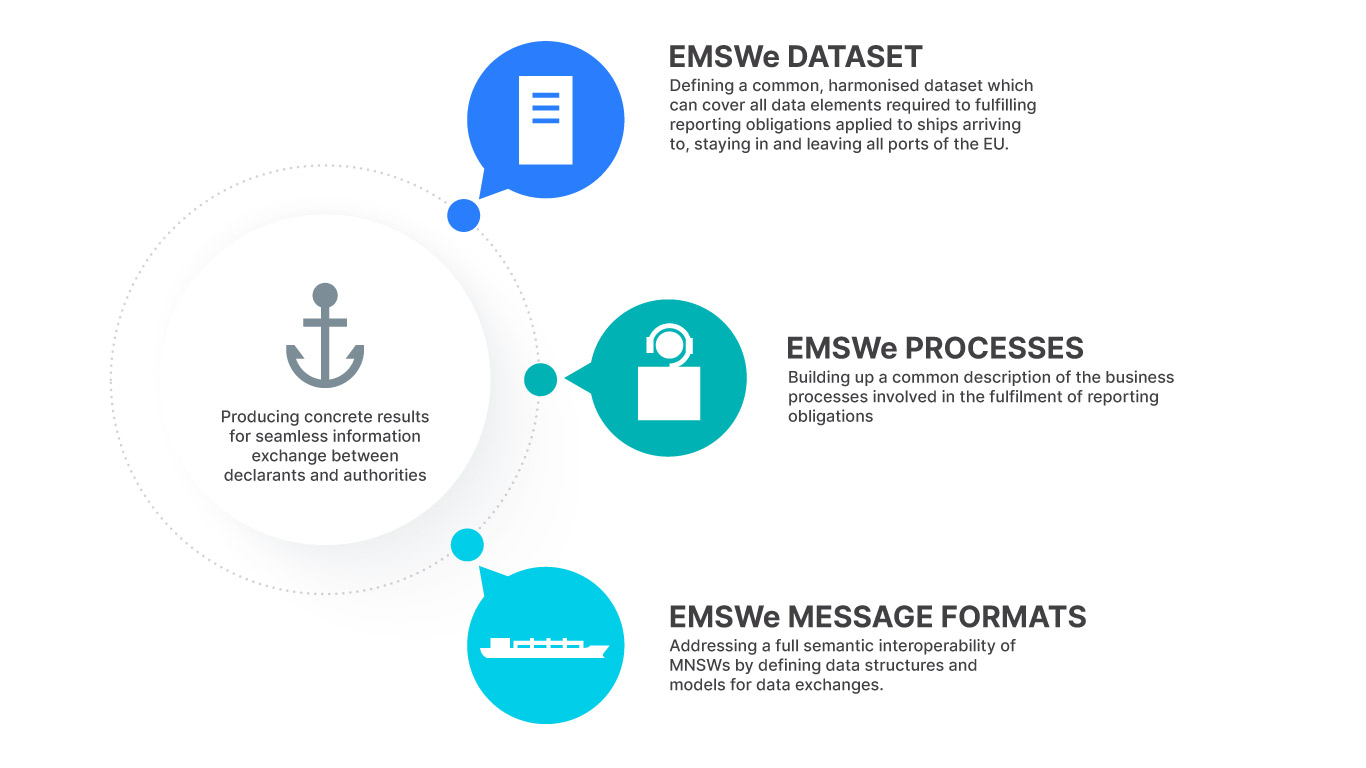
EMSWe processes:
Building up a common description of the business processes involved in the fulfilment of reporting obligations was an important action for the interoperability project.
Using input from experts from the relevant Directorates General of the Commission as well as experts from shipping industry associations, a business process model and notation (BPMN) was created to identify the main actors (declarants and authorities), systems (MNSWs, data providers and national authority systems), and information flows involved in the reporting processes.
EMSWe dataset:
The project aimed to define a common, harmonised dataset which would cover all data elements required to fulfilling reporting obligations applied to ships arriving to, staying in and leaving all ports of the EU. This included all reporting obligations stemming from legal acts of the Union (for example: port arrival notifications; notifications on waste and residues; lists of people on board for border control; notification of dangerous and polluting goods; security information; customs declarations), reporting obligations stemming from international instruments (FAL forms and the Maritime Declaration of Health) as well as reporting obligations defined from MS national and local requirements.
The EMSWe dataset, delivered in July 2021, contained 1115 data elements in 91 data groups, mapped with the IMO Compendium on Facilitation and Electronic Business and the EU Customs and Data Model to facilitate interconnection between maritime national single windows and with EU customs systems. The dataset provided a harmonised semantic definition of the information covering all reporting obligations applied to ships in all ports in the EU.
EMSWe message formats:
Defining data structures and models for data exchanges was a crucial part of addressing full semantic interoperability between maritime national single windows.
Under the project, a study was launched to create message structures corresponding to reporting processes between declarants’ systems (e.g., ship operators, shipping agents), data service providers and maritime national single windows.
By March 2022, the study had constructed message structures for each of the 48 formalities applicable to the EMSWe, using the UNECE Multi-Modal Transport Reference Data Model (MMT RDM) as a reference point. Extensions to the MMT RDM were included to cover data elements not covered by the standard.
The results of the Interoperability project, including the EMSWe processes, dataset and message structures, were communicated to the European Commission as preliminary input for the implementation of the EMSWe Regulation.
 Project funded by the European Union –
Project funded by the European Union –
European Maritime and Fisheries Fund
Find out more about the interoperability project:

